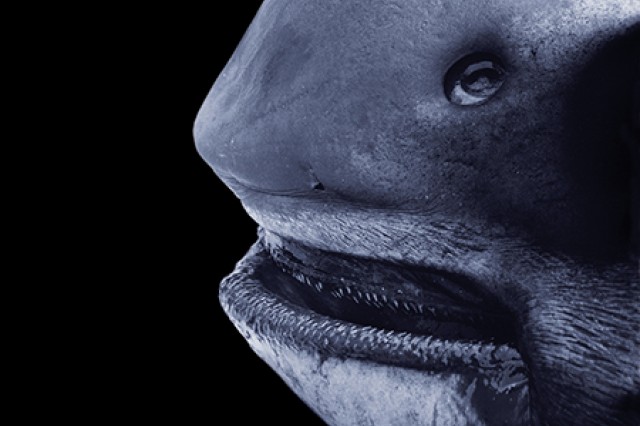The Great Shark Hunt
A community effort to uncover ancient L.A.
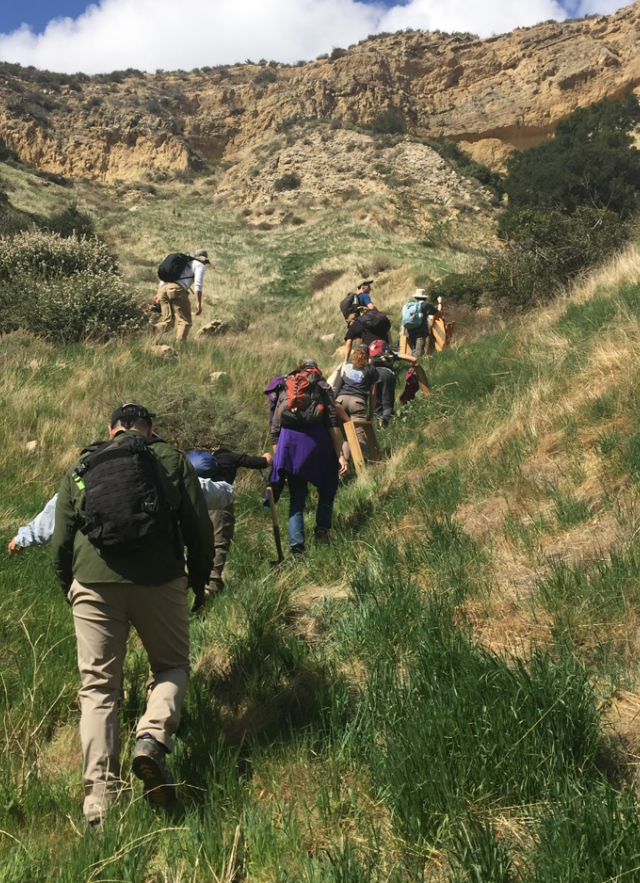
Museum paleontologists Austin Hendy and Jorge Velez-Juarbe have industrious partners on a shark fossil hunting enterprise. Members of the Southern California Paleontological Society have joined our experts to unearth ancient fishy remains, data that is opening the door to discovering more about the marine vertebrate biodiversity of long-ago Los Angeles.
Together, the group of experts and dedicated amateurs are surveying the biodiversity of a layer of rocks laid down in the shallow seas around Los Angeles, approximately two million years ago. This enterprise will give them a unique insight into the fauna living and swimming around the ancient Los Angeles coastline. These rocks, known as the Pico Formation, crop out in the vicinity of Santa Clarita in the Santa Susana Mountains, and point further west towards Ventura. Similar age rocks are found under downtown Los Angeles and south to Irvine in Orange County. On a recent dig, SCPS volunteers and museum paleontologists trekked the Los Llajas Trailhead up the Santa Susana Mountains in Simi Valley to find dozens of shark fossils, a fur seal tooth, whale bones, and several invertebrates.
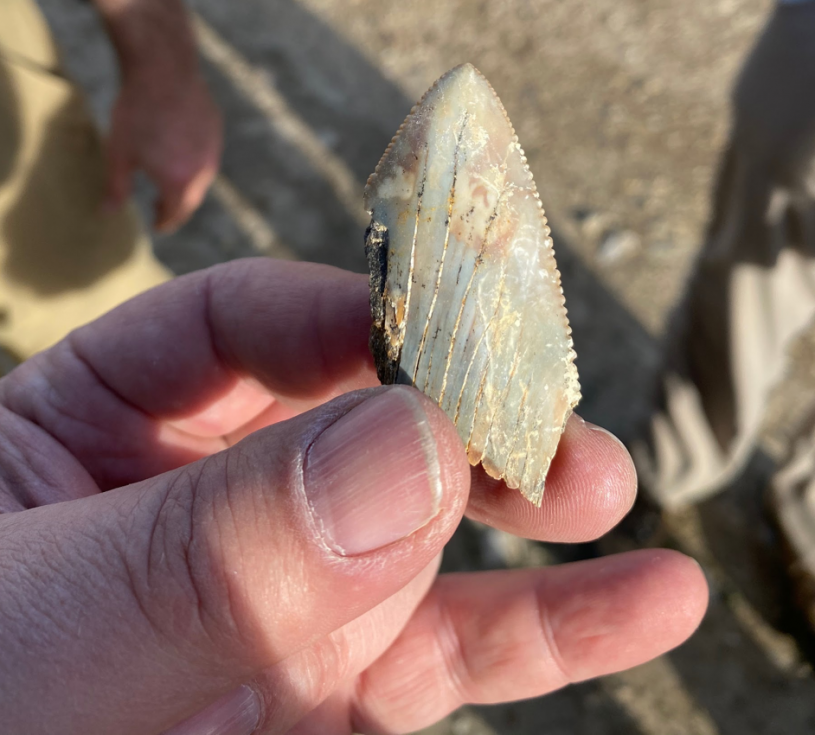
They also collected large samples of sediment. Subsequent processing (washing and then microscopy) of those samples by Invertebrate Paleontology volunteer Lidia Lustig has brought the tally to more than 100 teeth, ranging in size from several inches to just a couple of millimeters. While many fossils are currently unidentified, they have positively identified numerous Carcharodon carcharias (Great Whites), Carcharhinus falciformis (Silky sharks), Isurus praecursor (Bonito shark), Isurus oxyrinchus (Shortfin Mako shark), and Cetorhinus (Basking shark).
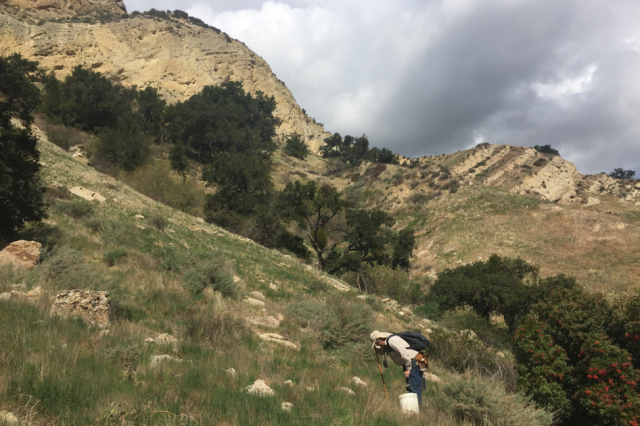
Photo by Austin Hendy
David Mautz of the Southern California Paleontological Society looking through fallen blocks of the Pico Formation.
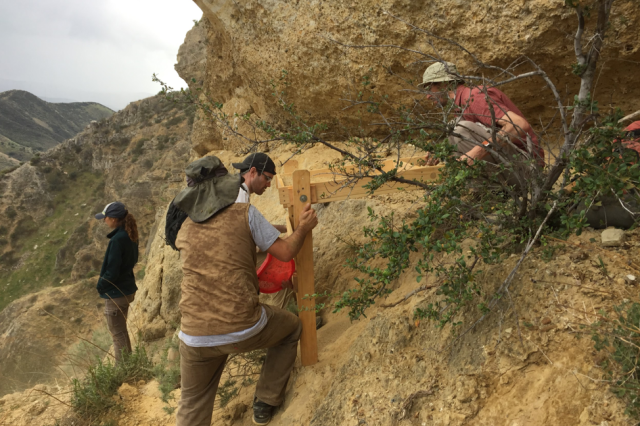
Photo by Paul Lipman
The team members want to avoid carrying out too much fine sand, so they did a lot of prep in the field. Rather than digging holes, they just scrape the surface of layers on cliffs where things have been lying in eroded sediment.
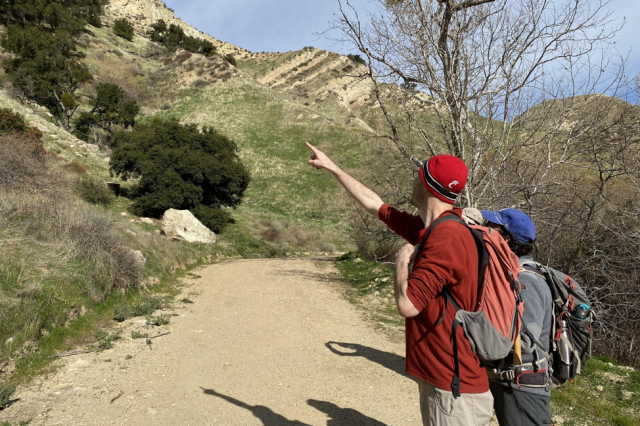
Photo by Paul Lipman
The groups split up into teams and take notes.
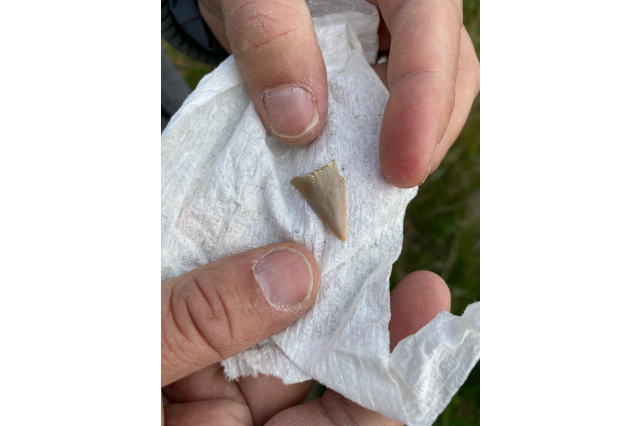
Photo by Paul Lipman
Great White Shark tooth!
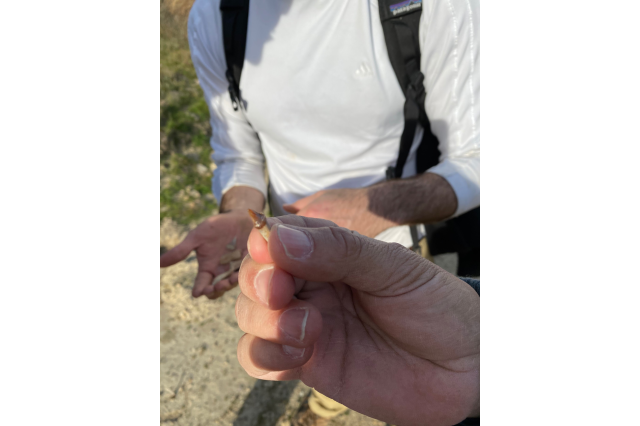
Photo by Paul Lipman
First seal or sea lion tooth from the Pico Formation. If a sea lion, it would be similar to the California Sea Lion, and therefore the oldest record of that species.
1 of 1
David Mautz of the Southern California Paleontological Society looking through fallen blocks of the Pico Formation.
Photo by Austin Hendy
The team members want to avoid carrying out too much fine sand, so they did a lot of prep in the field. Rather than digging holes, they just scrape the surface of layers on cliffs where things have been lying in eroded sediment.
Photo by Paul Lipman
The groups split up into teams and take notes.
Photo by Paul Lipman
Great White Shark tooth!
Photo by Paul Lipman
First seal or sea lion tooth from the Pico Formation. If a sea lion, it would be similar to the California Sea Lion, and therefore the oldest record of that species.
Photo by Paul Lipman
Velez-Juarbe, the Associate Curator of Mammalogy (Marine Mammals), says that adding this valuable inventory to our knowledge of the local fossil record allows them to compare with other vertebrate faunas in the region and reconstruct their paleoecology more fully: “What environments were those sharks, eared seals, and whales living in? We don’t find shark and whale bones concentrated everywhere, but we can now compare faunas from Santa Cruz through Baja California Sur to understand more about ancient marine life in this part of the Pacific Ocean.”
Austin Hendy, the Assistant Curator of Invertebrate Paleontology, agreed that the SCPS work is a tremendous benefit to the museum. The collaboration increases the training and paleontological knowledge of the public, and makes a meaningful contribution to our collections and research. “This adds to the body of scientific knowledge. Anyone can contribute to a scientific study. Anyone can participate in that process,” says Hendy, “It also helps to have as many people on deck for the excavating as possible. It’s a lot of hard work. We had a lot of dirt to sift through!"
What we care about is ethical collecting and research—not about who does it, but how it’s done. Many groups have assumed amateur equals not professional. We support professional work by an amateur. It’s part of our commitment. — Jorge Velez-Juarbe
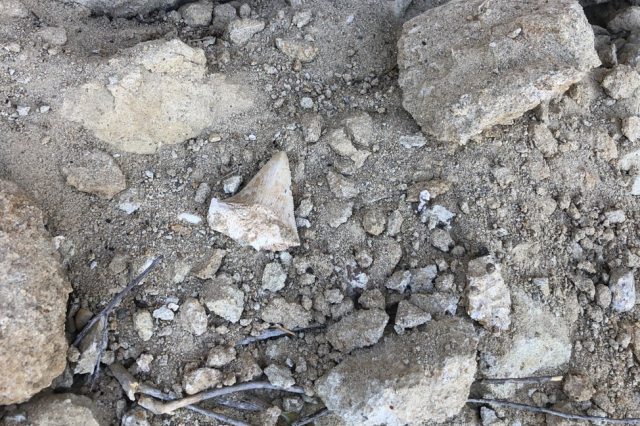
Photo by Paul Lipman
These teeth are weathering out and the root is eroded away. They are in porous sand, and that tends to break down the spongy root.
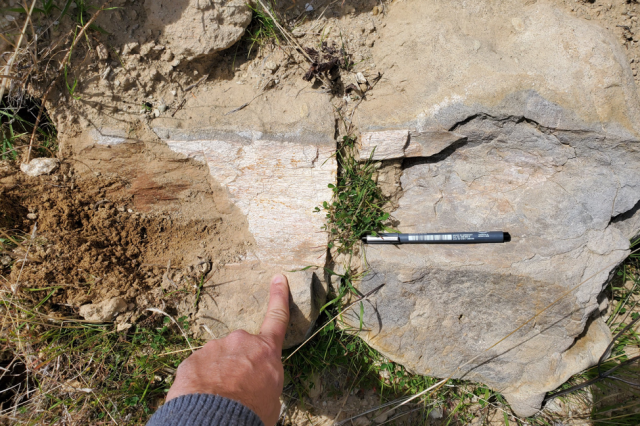
Whale mandible embedded in rock
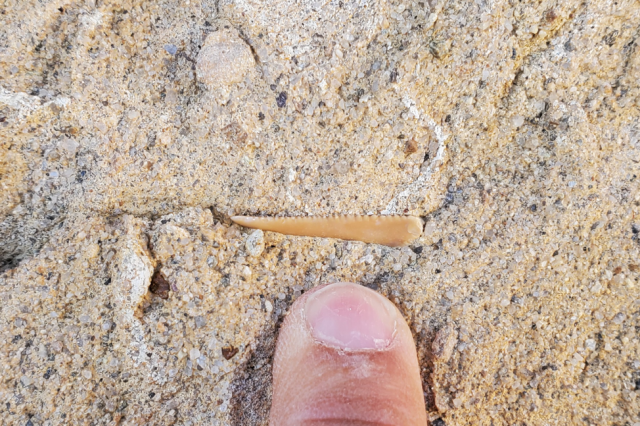
Tooth (Carcharodon) embedded in Pico Formation, which is in the vicinity of Santa Clarita, in the Santa Susana Mountains.
1 of 1
These teeth are weathering out and the root is eroded away. They are in porous sand, and that tends to break down the spongy root.
Photo by Paul Lipman
Whale mandible embedded in rock
Tooth (Carcharodon) embedded in Pico Formation, which is in the vicinity of Santa Clarita, in the Santa Susana Mountains.
Velez-Juarbe likes the conversations he has in the field with the inquisitive volunteers. “For me, when we get questions about marine mammals, it’s always an enjoyable experience. It gets the mind going when we’re in the field, when we look at chunks of bone and try to figure out what it is.”
In the future, the museum and volunteer shark teeth hunters aim to sample from additional sites in the Santa Susana Mountains. Kevin Kelly, an enthusiastic SCPS volunteer, has trekked into the mountains many times and is thrilled at the prospect of seeking out more evidence of big ancient fish.
“Sharks are my jam. They have survived all five mass extinctions,” Kelly said, “from an adventure standpoint, it’s a great experience. There’s an untapped resource of shark fossils in L.A.'s backyard, and it’s undocumented. You get to find shark teeth and add to this literature, and make a legit contribution to science.”
